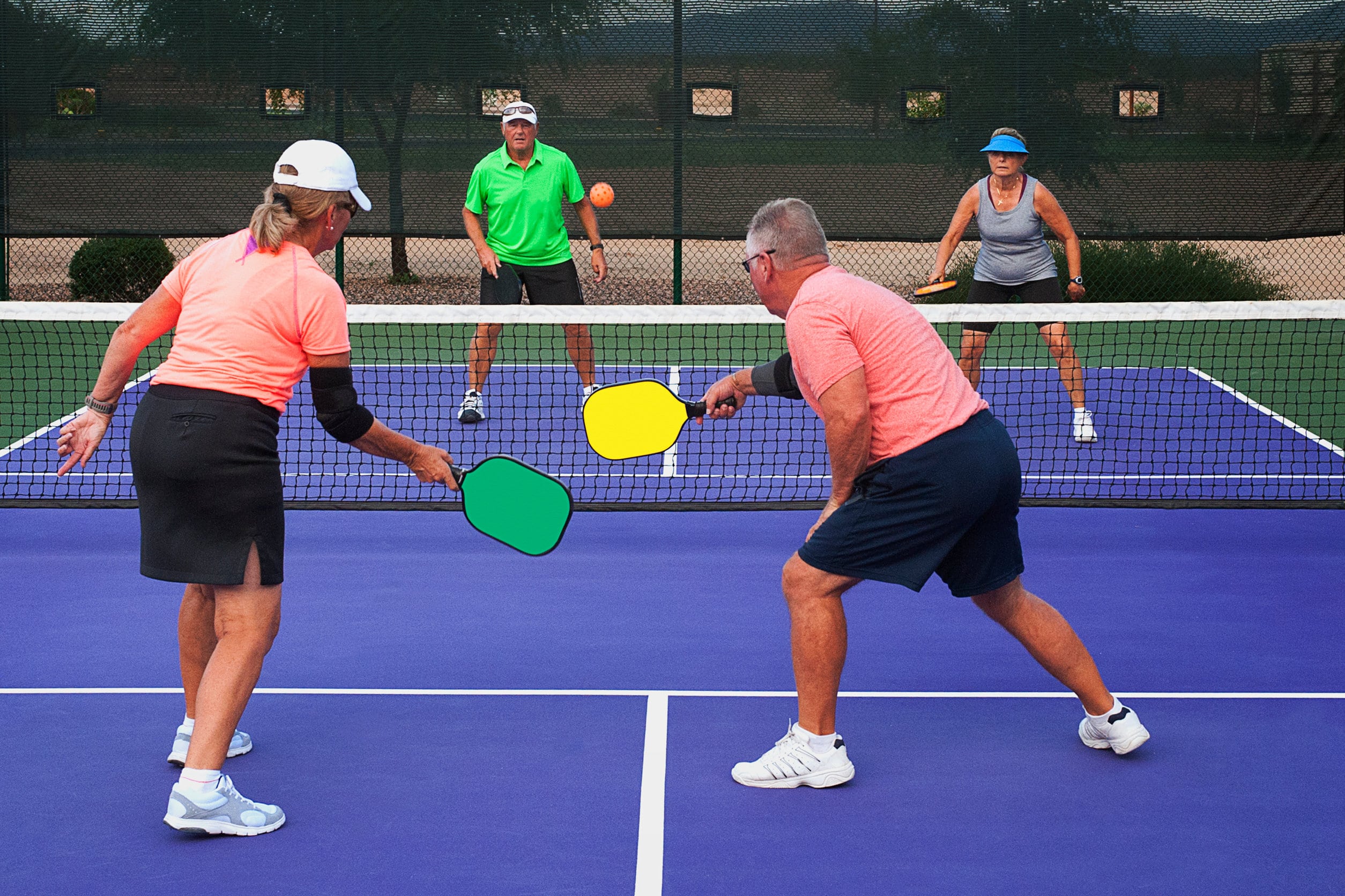Pickleball is the fastest growing sport in the US for over a decade and is now played in all 50 states. It combines the best elements from various racquet sports and was designed to allow for all players regardless of age or skill level to play for fun or competitively.
Pickleball courts are popping up everywhere around the country. In fact, the USAPA estimates that there are now over 9,000 places to play across the US. Over the last 10 years or so, it’s gone from being an “old person’s” game to a game of all ages that can bring family and friends together.
Pickleball is bringing loads of people to parks across the country and is even replacing tennis courts in various locations. In fact, the game is thought to have well over 5 million players now in the US alone as of 2022.
Pickleball was once primarily a game played by older, retired people looking to stay active or get in shape. Now however, the game is being recognized by all ages and being played more competitively than ever by a crowd that is in their 30s and younger.
Why Is Pickleball So Popular?
Pickleball has been enormously popular for over ten years running because it is a remarkably addictive sport that is designed to be inclusive and social but competitive all at the same time. No other racket or paddle sport brings people together like pickleball does. Not even tennis.
Pickleball takes all the feel-good elements from various paddle sports and combines them with some new rules and unique nuances. Then it mixes it all together in the most delicious of ways. Where some sports like ping pong, racquetball, or tennis fail, pickleball excels. All while being a game that is inherently social and friendly. It’s the goldilocks of paddle sports. It’s just right. It is this social aspect that is woven into its DNA that makes pickleball so popular and addictive. Once you get a taste, you’re going to want more.
Who Is Pickleball For?
Pickleball can be played by anyone regardless of skill level, racquet sport background, or age. From a recreational standpoint, pickleball can be played by truly anyone. It is that diverse. There is even a league for wheelchair-bound players.
On the Pickleball courts you’ll see families playing together as well as young adults in their 20s and 30s going against retired folks in their 50s and 60s.
In fact, the USAPA says that despite 50 to 60-year-olds making up over 20% of players in the US, 30 to 40-year-olds are right behind them at 17% and climbing.
So the game of pickleball truly knows no age limit. And its rules are built to even the playing field. This allows for older, less athletic players who possess touch and precision to go up against and even beat younger, more athletic players half their age.
The current trend of popularity is being driven by a younger crowd who are falling in love with pickleball’s demanding need for finesse and touch while allowing for power and authority at just the right times.
Now, let’s learn the basics on how it’s played.
How To Play – The Basics
Pickleball is played either singles or doubles but is more commonly played in a doubles format.
A game starts with the serving team winning the coin flip. Or in more casual play, one side may just let the other side serve.
The serve always starts with the player on the right-hand side serving quadrant and the serve is diagonal; just like in tennis.
The serve must be done underhand. It cannot be bounced. However, the serve in pickleball can be dropped. There is a difference between bouncing the ball and dropping the ball…more on that below when we talk rules.
The serve must cross the non-volley zone line on the opposite diagonal side of the court and the receiving team must let the serve bounce once. From there, the return of serve must also bounce, meaning the serving team cannot hit the ball out of the air yet. This is called the two-bounce rule.
After the ball has been allowed to bounce once on each team’s side of the court, the player may hit volleys or groundstrokes anywhere on the court beyond the no-volley zone.
The no-volley zone area or “kitchen” as it’s called, is the seven feet of court that runs from the no-volley zone line (or kitchen line) to the net. That space between the net and the kitchen line may only be entered if the ball has bounced in the kitchen area. Otherwise, all players must stand at the kitchen line and hit either volleys or groundstrokes.
Faults in pickleball consist of:
-Hitting the ball out of bounds
-Hitting the ball into the net
-Not letting the serve bounce once
-Not letting the return of serve bounce once
-Any shot that is allowed to bounce more than once
-Hitting a volley while standing in the kitchen area
-Coming in contact with the kitchen line after hitting a volley
The serving team continues to serve until a fault occurs from the serving team. At this point, the serve goes to the server’s partner. In singles pickleball, the serve goes to the opponent. From here, if the second server losses the point, then the serve goes to the return team and they each get a turn to win a point.
In pickleball, you’re either winning points as the serving team or earning the serve back as the return team.








